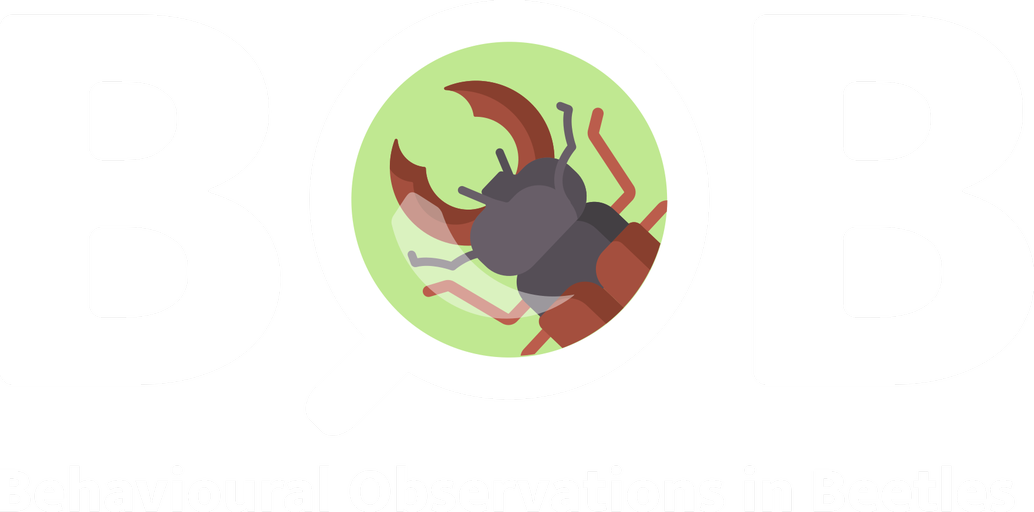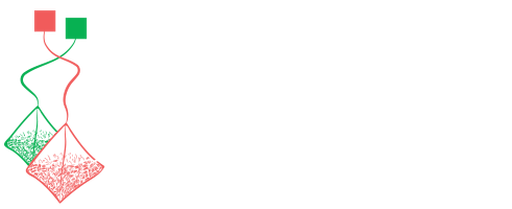SPOTTERON Citizen Science Blog
E-Mail Subscription to your Citizen Science Project on the SPOTTERON Platform
For projects who want to collect email addresses, e.g. for newsletter subscriptions, SPOTTERON offers a User Email Subscription Feature, free to use by any project on the platform.
Let Participants in Your Citizen Science Project Know That You Care - Reward them with a Badge!
Communication in Citizen Science projects is a significant factor in your project's success. There are many ways to connect with the participants in a project, one of them is rewarding users when they contribute.
New on the SPOTTERON Platform: ClimateWatch - a Citizen Science App for Climate Research
Slip of Evidence - a new Citizen Science App on the SPOTTERON Platform to explore soil health
The SPOTTERON Citizen Science Community is now on Discord!
Are you a SPOTTERON Partner who wishes to engage with Citizen Scientists on the Plattform more directly?
Do you have questions about a specific project or SPOTTERON in general that you want to ask quickly or any issues to report, but you don’t like to send an e-mail?
Search no more; we’ve got you covered!
Fossilfinder - the new paleontology app on the SPOTTERON Citizen Science Platform
We are excited to present you the latest web app on the SPOTTERON Citizen Science platform today: The Fossilfinder is the new tool for hobby and professional paleontologists to document fossil finds throughout Austria and beyond.
Better science data over time in Citizen Science Apps: introducing the Nearby-Spot feature
As a project partner on the SPOTTERON platform, you can now gently guide the Citizen Scientists contributing to your project to make better, more accurate observations in the Apps, thus making the data you're trying to obtain better and easier to manage.
MAKENYA Mammal Atlas Kenya - A new Citizen Science App on the SPOTTERON platform
The MAKENYA - Mammal Atlas Kenya project is a Kenyan Citizen Science App to monitor rare and common mammals. Together with scientists of the Zoology Department of Kenya's National Museums, we developed and designed the first mobile Application for an African country running on the SPOTTERON Platform.
Spot-A-Bee, the Citizen Science App about bees and plants in cities, is now also available in Welsh. Croeso!
We're delighted to announce that the Spot-A-Bee Citizen Science app is now available to Welsh speakers! The project aims to determine which plants, flowers, and trees in cities and urban areas benefit our most popular pollinators: the bees.
What we need to bring new people to Citizen Science: our strategy for reaching out and engaging new people who have never heard of Citizen Science before
I am a Citizen Scientist. I have been one since I was eight years old, albeit without ever hearing the term even once. I was interested in nature, the environment, and I spent hours after hours exploring the wildlife in ponds, my parents' garden, forests, and even brown land. (Oh, I love brown land, I still sneak through construction fences to explore them sometimes :)
"The Science of Citizen Science" Book has been published!
Starting the new year with some good news: The new open-action book, "The Science of Citizen science "has been finally published by Springer and is now availableas a free book (Open Access) for download.
With over a hundred contributing authors from 24 countries, including us, the book is a culmination of the work of the COST (Cooperation in Science and Technology in Europe) Action, "Citizen Science to promote creativity, scientific literacy, and innovation throughout Europe ", COST Action CA15212.
Happy Holidays 2020 and thank you for all the Citizen Science!
This year was one of the most difficult ones for all of us, with the Corona Virus pandemic, lockdowns and social distancing. But nevertheless, 2020 also brought good things and amazing new Citizen Science projects on the SPOTTERON platform. We loved the exciting work tasks and the diverse project topics which we have been allowed to design and develop in this strange year.
Big City Birds - A Citizen Science Success Story from Australia
We are delighted to hear that our partner’s, the University of Sydney’s, Big City Birds app is making a big impact in Australia, as a recent article in the Guardian Australia shows.
The Citizen Science app that allows city-dwellers to turn into scientists and track Australia’s urban birds runs on the SPOTTERON platform.
Private Spots - A new Feature on the SPOTTERON Citizen Science Platform
In many Citizen Science and community engagement projects, participants may be reluctant to enter any data that may be sensitive, either, e.g. because of contributing an endangered species or for not wanting to share the location of their private garden.
Big City Birds - A New Project on the SPOTTERON Citizen Science Platform
The Univerity of Sydney invites citizens to take part in their latest Citizen Science project, Big City Birds, running on the SPOTTERON platform. The project aims to find out more about the adaptability of certain bird species in cities and urban areas.
Brush Turkey app wins 2020 Eureka Prize for Innovation in Citizen Science Australia
The finalist 2020 for the Eureka Prize for Innovation in Citizen Science Australia has been announced. Congratulations to Team Brush Turkey who are listed with the BrushTurkey app, which is running on the SPOTTERON platform!
EU Horizon 2020 Call - Citizen Science Apps for a Green Deal
The new call in the EU Horizon 2020 program aims for supporting and implementing a Green Deal. For projects participating in this call and searching for partners for Citizen Science Apps and participatory tools, we are happy to help!
Citizen Science for everyone! An interview with SPOTTERON in prestigious Austrian newspaper "Der Standard"
Biodiversity apps are booming, so it is no surprise that even traditional newspapers are writing about it. We are therefore proud to report that our co-founder Philipp was interviewed by the prestigious Austrian newspaper "Der Standard" (print edition) on new technologies and nature apps.
ECSA 2020: Designing a citizen science project? Let’s explore technology design & implementation!
On this year's ECSA Citizen Science conference, we have been invited to hold a workshop on technology and the practice of design for Citizen Science. Since the conference moved completely online (read more about our experiences here in the Blog), we filled the session together with Jessie L. Oliver, who shared her research on how to design fun citizen science tech to find a sneaky Australia bird species (i.e. Eastern bristlebirds). Citizen Science is used and what technology implementation means for Citizen Science Apps and interactive online tools. Thanks for inviting us to be part of that session!
Our ECSA 2020 Citizen Science Conference Experience - going virtual!
From 6th to 10th of September, the European Citizen Science Conference ECSA 2020 took place in the virtual space. Since we have been designing and developing the SPOTTERON Citizen Science platform for apps and interactive toolkits since 2014 already, it was not our first conference on Citizen Science - at least for Philipp, who is quite a regular in terms of visiting conferences. But this year, things rarely have been normal, and so the virtual event of ECSA 2020 was something new to all of us. Here are some first impressions by 2 conference newbies and a regular:
Tune in for Citizen Science! SPOTTERON at the ECSA 2020 online conference for citizen science in Trieste, Italy
From the 6th to 10th of September, the European Citizen Science Conference 2020 by ECSA will be held exclusively online in Trieste, Italy.
Spot Updates Feature: Collect not only single occurrence data records, create timelines in your Citizen Science App!
What is the best way for a Citizen Scientist to observe a specific plant, landscape, place, etc. over a more extended period of time and gather valuable data during its course?
Our world is subject to constant change.
It establishes itself by constant development and evolution, triggered by events like human activity, climate change, erosion, or simply the changing of the seasons, and many more. These changes in observational data are not just a side effect, but they're often the primary focus for scientists and the research project.
Green Growth Forests - A new Citizen Science App on the SPOTTERON platform
Green Growth Forests is another new app on the SPOTTERON citizen science platform and the first project from South America!
A User-Journey in Citizen Science Apps
For Citizen Science projects, it is essential to understand the needs of the user and how to design interactive products and apps to guarantee good usability – which is highly involving. Researching and observing should be an experience with added value. Therefore User Journeys are often used in the progress of developing a new Application.
On the importance of design for scientific posters - and Winning the First Prize!
Making complex information easy to understand not just to scientists but also to citizens is an art form, especially when it comes to describing things or places very few among us have ever seen or experienced: space.
KraMobil - a new Citizen Science App on the SPOTTERON platform
KraMobil is a new Citizen Science Project of the University of Vienna in cooperation with ZooVienna to observe crows and their behaviour.
New on the SPOTTERON Citizen Science Platform: Spot-A-Bee
Spot-A-Bee, a new app by The University of Glasgow and the Cardiff University aims to find out which plants in urban areas are especially bee-friendly and help bee populations thrive.
Hey Citizen Scientists, wanna to name some Northern Bald Ibis Chicks?
Our Citizen Science partner "Konrad Lorenz Research Center", running the Citizen Science App "Forschen im Almtal" on the SPOTTERON Platform and initiator of "NestCams", our first collaboration with Zooniverse, started a great initiative. At their research station, they host a colony of Northern Bald Ibis, amazing birds which you can also observe in the "Forschen I'm Almtal" Citizen Science App.
How it feels to be a Citizen Scientist (making an amazing find)
On Saturday last week, I was on a walk outside to get a little bit of sunshine. But since Citizen Science became a significant thing in my life, these rounds are not only for stretching my legs. With the smartphone in my pocket and a bunch of Citizen Science Apps installed, every walk feels like an adventure.
CoronaReport App - A Citizen Science app in times of a global crisis
Challenging times require creative solutions. The current corona crisis is a perfect example of that. That’s why we are excited to announce that the University of Edinburgh joined forces with SPOTTERON once more to create the CoronaReport Citizen Science app because understanding the social impact of COVID-19 on society is very important - not only for research but for society itself.
Citizen Science and the importance of hashtags
In today's fast and everchanging world, it can seem tedious to syphon through the haze of information to find the relevant one. A quick search on Google is undoubtedly a good thing, but what if you need the information to be verified as quickly, as possible?
Many users will turn to social media to do that. Why? Because on Twitter, you can find news in real-time. Without much effort, you can verify a piece of information in an instant.
A new feature for a better data quality in Citizen Science Apps: Check & Lock
Data quality and data management are essential aspects of Citizen Science. In order to always have a validated and stable data-set of user's contributions that can be managed directly in your Citizen Science app's administration interface present, we have created "Check & Lock".
How to choose a good name for your Citizen Science app
When choosing a name for your Citizen Science app or a project, you're creating a public appearance. You want to make it stand out, and you want people to remember it. Here's a short guideline on how to best achieve precisely that.
Six years of Citizen Science: Europe on SPOTTERON
It has been six years since we started the first apps on the SPOTTERON platform and what a journey this has been!
A starry Citizen Science holiday card
2019 has been an amazing year. The SPOTTERON Citizen Science platform evolved into an even more professional solution for participatory science applications. In summer, we organized the "SPOTTERON Feature Ecosystem" into various thematic packages for a better overview of what the platform brings to every new Citizen Science project. Furthermore, we were able to welcome new project partners from all across Europe, Australia and the United States of America on SPOTTERON.
Science Meets Art - An Interview with Max Helmberger
At SPOTTERON, we love it when science, design and art come together to create something quite special and unique. One of those special things are the clay animation videos by Max Helmberger.
Desktop vs. Mobile - What's best for Citizen Science Projects?
An analysis of the state of the mobile web conducted by SimilarWeb earlier this year presented on Perficient Digital digital marketing agency has shown that usage of the mobile internet vs the desktop went down compared to 2017 but is still higher than in 2016.
Introducing the Citizen Science Apps: Mushroom Finder
It’s mushroom season here in Austria, which means it’s the perfect time to introduce you to the Mushroom Finder- the SPOTTERON mushroop app for citizen scientist!
Introducing the apps: The Tea Bag Index
In the Tea Bag Index Citizen Science App, everything is about soil. Various observation categories are ready to participate in, from easy soil classification and testing to the well-known method of burying and weighting teabags to measure the decay rate of plants. Citizen Scientists are welcome to participate worldwide and contribute to improving climate models and soil research.
Introducing the Citizen Science Apps: SpiderSpotter
In this blog series we would like to introduce all our apps and give you an overview of the diverse world of Citizen Science and its possibilities.
The SpiderSpotter App was created in cooperation with the University of Ghent, and will be enjoyed by all spider lovers!
Upcoming app feature: Citizen Science Events
A brand new feature for all Citizen Science apps on the SPOTTERON platform comes with the next release version: Citizen Science Events. With this new extension, the project teams can publish events like workshops or field trips directly in the Citizen Science app. Secondly, it is possible to create area events, to e.g. highlight, where more observations by the Citizen Scientists are needed.
Introducing the Citizen Science Apps: RoadKill
In this blog series we would like to introduce all our apps and give you an overview of the diverse world of Citizen Science and its possibilities.
Today's App: Roadkill
EXPLORE CITIZEN SCIENCE - a co-created video clip for free use
During the iDiv Summer School 2019 "Citizen Science – Innovation in Open Science, Society, and Policy" in Leipzig, Germany, we co-created the concept for a free Citizen Science video called "Explore Citizen Science", which you can download and use freely.
Introducing the Citizen Science Apps: Crowdwater
CrowdWater is a global Citizen Science project initiated by the University of Zurich, which collects hydrological data. The goal is to develop a cheap and easy data collection method that can be used to predict floods and low flow. The long-term aim of the project is to complement existing gauging station networks, especially in regions with a sparse measurement network, such as in developing countries.
The NestCams Project has officially launched!
We are very proud to announce that the NestCams project has now officially launched!
NestCams is a Citizen Science Project developed with our partners at the Core Facility Konrad Lorenz Research Station for Behavior and Cognition (Konrad Lorenz Forschungsstelle) on the Zooniverse platform.
New Citizen Science WhatsApp Group online
Inspired by the iDiv Summer School 2019, we have created a new public WhatsApp group to serve as a direct communication channel for all members, stakeholders, and academics in Citizen Science.
Schweiz Forscht portray some of their most dedicated citizen scientist!
In a new video series, our partners from Schweiz Forscht portray some of their most dedicated Citizen Scientist on their website.
Citizen Science on tour: conferences, kids university and the iDiv summer school 2019
During summer, many conferences on Citizen Science and other events are happening. To spread the word about Citizen Science and share our experience in creating interactive Citizen Science apps, we had quite a schedule this year..
Introducing the Citizen Science Apps: Nature's Calender ZAMG
In this blog series we would like to introduce all our apps and give you an overview of the diverse world of Citizen Science and its possibilities. Our first one is the "Naturkalender" (Nature's Calender).
Open Call at the ACTION project!
The ACTION project (Participatory science toolkit against pollution, co-funded by the European Commission under the Horizon 2020 framework, SwafS programme ) has an open call for ongoing citizen science projects related to any form of pollution in Europe or worldwide looking for support.
Winners of Citizen Science Project Landauf, LandApp photo contest announced!
This spring, the Landesarchiv Baden-Württemberg, Germany, organized a photo contest through our Citizen Science App "Landauf, LandApp". Users were encouraged to go on a historical expedition and find out how the cities and their surroundings have changed in the last few decades.
Impressions from Obergurgl | before the OECSK2019
Last week, the Austrian Citizen Science conference took place in Obergurgl, Tyrolia and we took the occasion to arrive one day earlier to visit the mountainside and get a good view of the impressive landscape surrounding the area.As Citizen Scientists, we always love to stumble apon new things to record and contribute in various scientific projects.
Citizen Science App Release: Tea Bag Index on SPOTTERON
A warm welcome to the new released Tea Bag Index Citizen Science app, now running on the SPOTTERON platform! We are especially happy to have this well known Citizen Science research project about soil and the global carbon cycle joining our CitSci network of projects by partner across Europe and beyond.The first spots by schools have already been contributed and the the first teabags have been burried to observe the decay rate of plant material on the locations.
Citizen Science Data Statistics: a new SPOTTERON app feature for realtime data visualization
The new SPOTTERON version 2.7 does not only introduce the new Leaderboards (aka User Ranking) for all Citizen Science apps running on the platform, but also 2 more panels with new data statistics.
Virtual Staff Gauges for Crowd-Based Stream Level Observations
We are proud to announce, that lately, we formed part of the author-team of a scientific paper, published in the Frontiers magazine, about Citizen Science based on hydrological observations.
User Ranking 2.0: Community Leaderboards in Citizen Science Apps
The new platform version 2.7. is going to bring a complete overhaul of the ranking panel with advanced community leaderboards and more statistic tool for all Citizen Science apps on the SPOTTERON platform.
Citizen Science Interview I - Johannes Frauscher, Global 2000
Today marks the release day for our Citizen Science interview series! Continuously we are going to publish interviews with different head of projects running on the SPOTTERON Platform.
Multilingualism in Citizen Science Projects
When developing Citizen Science Apps, the usability has a big impact on how well and frequent people use them in the end. The goal for Citizen Science Apps is to become an important part in the everyday lives of their users in the long term, so that users can gain experience and can contribute important data to scientific projects.
Day of Phenology at the ZAMG Vienna
On Wednesday, the 6th of March, the first "Day of Phenology" took place at the ZAMG in Vienna. We have also been invited by one of our project partners from the "Naturkalender App".
#CitSci2019 Special Feature - get your Citizen Science apps 50% off
Currently, the #CitSci2019 conference in Raleigh, NC is going on and we follow the workshops, sessions and comments via twitter from our SPOTTERON Citizen Science design office in Vienna, Europe. But since we always love to support Citizen Science, we decided spontanously to do another special for one project of any participant or group at the conference.
Citizen Science in the gis.Business Magazine: Knowledge in the Hands of Citizens
We are very happy to be featured in the new Citizen Sience 4.0 article by Maximilian Ueberham in the gis.Business magazine (Ausgabe 01/2019). After a short introduction about Citizen Science author Maximilian Ueberham presents Citizen Sience projects, including the SPOTTERON Citizen Science platform.
A new version release! SPOTTERON 2.6.0 includes User Roles, Flagging and Data Download for all Citizen Science Apps
We are happy to announce the release of the new SPOTTERON version 2.6.0! The next SPOTTERON Update brings 3 new extension, available for all Citizen Science apps running on the SPOTTERON platform. In the following blog entry we are going to explain these new features and their function.
This was the Vienna Ball of Sciences 2019 - with video!
On the 25th of January 2019 the Vienna City Hall hosted the Vienna Ball of Sciences for the 5th time, held under the motto: “Waltz and Science". As Citizen Scientists from SPOTTERON it was a great pleasure, that we had been invited to film the event just as we did the year before.
Turning off the lights: a new "Night mode" in Citizen Science apps for observations from dusk till dawn
Sometimes, Citizen Science contributions are happening long after the sun has set. To reduce the blinding effect of a smartphone display, we have included a new night mode option for all Citizen Science apps on the SPOTTERON platform.
Why we recommend not more then 15 options to choose from lists in your Citizen Science app
When developing a Citizen Science app, you can influence usability in many ways. But these crucial decisions can be decisive factors when it comes down to whether they enjoy using it and do so regularly.
Happy New Year 2019 and thanks for all the Citizen Science!
Thanks for all the CitizenScience! We wish you a happy New Year's Eve and many more exciting #CitSci moments in the upcoming year. We have already new projects coming up, the first one about light pollution and Citizen Science will be ready in 1st of February. But for now, we are off until the end of first week of the new year - see you in 2019!
New feature: "User Roles" for Citizen Science apps (Data Quality Pack)
The next SPOTTERON Update brings 3 new extension for all Citizen Science apps on the platform. One of the new features are the upcoming "User Roles", part of SPOTTERON's data quality pack.
Brushturkeys Citizen Science App on TV
We were very proud to see that the latest Citizen Science project to join the SPOTTERON platform and also winner of the Australian Citizen Science Conference competition was featured on Australian news last week.
New Version release! SPOTTERON 2.5 brings Offline Maps and Badges for all Citizen Science apps
With the new SPOTTERON platform version 2.5 we bring two more highlights to all apps on the Citizen Science platform: First of all, the Offline Maps & Spots feature allows users to download map areas and spots on their phone for having them present, even when there is no internet connection available. This feature is a big improvement, specially for Citizen Science Apps, in which the main activity takes place often outdoors in the field where web connectivitiy is not always a given thing.
Citizen Science Summer School 2018
From 15th to 19th of October, the Citizen Science Summer School "Citizen Science in Theory and Practice" took place in "Grünau im Almtal", a small town in the south of Upper Austria. Grünau is particular famous for the KLF, the "Konrad Lorenz Reseach Station" where zoologist and Nobel Prize winner Konrad Lorenz studied animal behavior and became one of the founders of modern ethology. Not far from the research station, a whole week was dedicated to Citizen Science and many interesting workshops, sessions and collaboration teamwork took place.
Preview: Offline Maps & Spots for Citizen Science Apps
Citizen Science often happens out in the field where network coverage can be weaker. That's why it can be especially helpful and pratical to pre-download map sections and save them locally on a smartphone for excursions and hiking trips.
Impressions from the European Researchers Night in Vienna
Last week it was time for the annual European Researchers Night, a mega event which takes place simultaneously in hundreds of cities all over Europe, again. Of course we couldn't miss it and went to the event at the TGM in the 20th district of Vienna.
New Citizen Science project-forum on SPOTTERON
Communication is an important factor in the Citizen Science field, not only within the projects themselves, but also among project leaders. For this purpose we implemented a forum on our website in the summer of 2018, which internally functions as a platform for exchange, networking and feedback.
Two new features: Top Spots & Meta-Infos
We recently added two new feature to SPOTTERONs ever extending 'feature ecosystem'. The two most recent additions 'Top Spots' and 'Meta-Infos' can enhance better data quality and more..
From paper sketch to Citizen Science observation data entry dialogue
Today we want to take you on a little trip in our blog. We want to take you on the journey of going from a paper sketch to a custom built Citizen Science observation entry dialogue alongside the most recent addition to the SPOTTERON Citizen Science platform - Brushturkeys.
Get the Citizen Science app manual along with your project
We recently added something new as part of all SPOTTERON packages: a short app-manual for all interactive Citizen Science projects on the platform.
A new addition to the platform - Welcome Brushturkeys
We are happy to welcome a new project to the SPOTTERON platform this month. As you can tell by the name, „Brushturkeys - birds in suburbia“ is all about Australian Brushturkeys extending their natural habitat, which usually includes rainforests and woodlands, to suburban areas.
Video: Forum Citizen Science in Frankfurt, Germany
On 6th & 7th of September 2018, the "Forum Citizen Science" took place in Frankfurt, Germany, organised by the german Citizen Science hub "Bürger schaffen Wissen".
Hello there Frankfurt! See you at the #ForumCS
Hello there Frankfurt!
This Thursday and Friday, on the 6th and 7th of September, we will be in Frankfurt for the annual meetup of the German Citizen Science Community, the "Forum Citizen Science". We will be present during the entire conference, host a workshop and will also have a SPOTTERON stand.
ECSA European Citizen Science Contest: Winner Announcement
Thanks for the many interesting submissions and your paticipation in the SPOTTERON Citizen Science contest for getting a free App in Europe! We are finally able to announce the winner (and a follow up project as second place) here on our Citizen Science blog:
Collaborative Citizen Science - Project synergies in extension ecosystem
All Citizen Science projects on the SPOTTERON platform can use all custom extensions on the platform without additional costs from the start.
Article 13 threatens all Citizen Science projects - let`s take action now!
ECSA 2018 - from the Conference about Citizen Science in Geneva, Switzerland
Every two years, a big conference about Citizen Science takes place in an European Country - this time we travelled to Geneva in Switzerland, where the ECSA 2018 was happening.
Impressions from national park Lobau
This weekend we got do some Shinrin Yoku and recharged our batteries in our very beloved viennese nature conservation area: Lobau, which is part of the national parc Danube-Auen, has been a protected area since 1978 and is our favourite playground for Citizen Science Adventures.
Let's meet Citizen Science! Episode 3 - Herpetofauna
During the "Long Night of Research" (Lange Nacht der Forschung) in Vienna Austria at the Museum of Natural History (NHM) we did not only meet with Irmgard Greilhuber from the Citizen Science project Mycodata from our last Episode of "Let's meet Citizen Science", we also got to meet Silke Schweiger and her project Herpetofauna by the NHM.
Let's meet up for Citizen Science! SPOTTERON at the ECSA Conference 2018 in Geneva, Switzerland
From 3rd to 5th of June 2018, the ECSA Conference 2018 and the general assembly of the European Citizen Science Association takes place in Geneva, Switzerland. As members of ECSA and platform for Citizen Science Apps we for sure take part during the whole time.
Bye Bye Anslagstavlan | Public Boards!
After running on the SPOTTERON platform since september 2016, Anslagstavlan (which even had a SPOTTERON designed logo), has ended and will therefore also leave our platform. We want to commemorate the project a little with this entry in our blog.
New Infopanel Design: Learning by using Citizen Science Apps
Today we released the SPOTTERON platform update 2.1.4 for all Android and iOS apps and interactive maps.
Let's meet Citizen Science! Episode 2 - Austrian Mycological Society ÖMG
During the "Long Night of Research" (Lange Nacht der Forschung) in Vienna Austria at the Museum of Natural History (NHM) we met with Irmgard Greilhuber from the Citizen Science project Mycodata by the Austrian Mycological Society ÖMG. Irmgard is presenting the project and how Citizen Scientists can participate by submitting observations of mushrooms and fungi.
Let's meet Citizen Science! Episode 1 - Nature's Calendar
We talked to Thomas Hübner from the Central Station for Meteorology and Geodynamics (ZAMG) during the "Long Night of Research" in the Museum of Natural History in Vienna, Austria about the new phenology Citizen Science project "Nature's Calendar" about the the 10 phenological seasons in the project and what Citizen Scientists can observe in the Citizen Science App for Android and IOS.
Package L for custom interactive maps
Not every citizen science project has the need for own custom smartphone apps. Starting with April 2018, we offer a light-weight SPOTTERON package for Citizen Science projects, which provides an innovative web tool for desktop browsers..
Meet CrowdWater! - SPOTTERON Citizen Science Adventure
Since the European Geosciences Union EGU holds its anual meeting in Vienna, Austria, we took the opportunity to catch up with Crowdwater, a Citizen Science project about hydrology and water levels of rivers, soil moisture and stream spotting, running on the SPOTTERON Citizen Science platform.
Citizen Science Easter Egg Hunt 2018
Today we decided to went on a Easter Egg Hunt - and since it is raining heavily today we took this journey to another realm: the microcosm!
Finally! The first SPOTTERON Citizen Science Adventure is here!
We are really happy to present to you: the very first CITIZEN SCIENCE ADVENTURE! The idea has been lingering in our heads for quite some time now and we were finally able to get this new and exciting project started. The kick-off was made by our beloved Philipp Jonathan with a quick introduction to phenology and a common snowdrop he spotted in the Nature's Calendar app in a viennese parc this weekend.
Video: What we do for Citizen Science
For the current Give-Away of a free Citizen Science App on the SPOTTERON platform for Australia, we did a short introduction video about what we do for Citizen Science and about the traits of the platform itself.
Australia! Get your free Citizen Science Apps on the SPOTTERON platform
SPOTTERON goes Australia! We are happy to announce that we are giving away a customised geo-locatable free Citizen Science app among all members of the Australian Citizen Science Association that take part in the competition and tell us how their proposed geo-locatable citizen science app will increase scientific knowledge.
New Citizen Science App Feature: Spot Statistics
A new feature is ready for use by all Citizen Science projects running on the SPOTTERON platform: Spot Statistics. The observation of change over time plays an important role in many Citizen Science projects, from hydrology, land coverage or phenology. In the CitSci project "Crowdwater", running on SPOTTERON, Citizen Scientist observe the change of water levels in streams and rivers. As an extension to the Citizen Science smartphone apps, we just released a new feature which introduces a new statistic panel in the detail view of a spot.
Citizen Science Christmas!
This year has been a big step (and with the release of the community package more like a giant leap) for the SPOTTERON Citizen Science Platform, and thanks to your help and interest, we can now offer a mobile and interactive channel for every CitSci project out there.
Start of the upcoming Top Citizen Science Projekt "Naturkalender"
The Sparkling Science Projekt "NaturVerrückt" ("CrazyNature"), currently running on the SPOTTERON Citizen Science Platform, is going to be relaunched and extended in the next months. The new Top Citizen Science-Projektes „Naturkalender“ is all about Phenology and Citizen Scientists can observe the development of various plant species via Smartphone App for Science.
Citizen Science gets social: SPOTTERON TWO Milestone Release
We now provide a full feature community included in all Citizen Science projects running on the SPOTTERON platform. The new milestone version makes Citizen Science not fully mobile but also immersive. Imagine the potential of social interaction built directly into your science project - that's what SPOTTERON TWO is all about..
Worldwide Citizen Science Apps

CrowdWater is a global Citizen Science project initiated by the University of Zurich, which collects hydrological data. The goal is to develop a cheap and easy data collection method that can be used to predict floods and low flow. The long-term aim of the project is to complement existing gauging station networks, especially in regions with a sparse measurement network, such as in developing countries.
CrowdWater

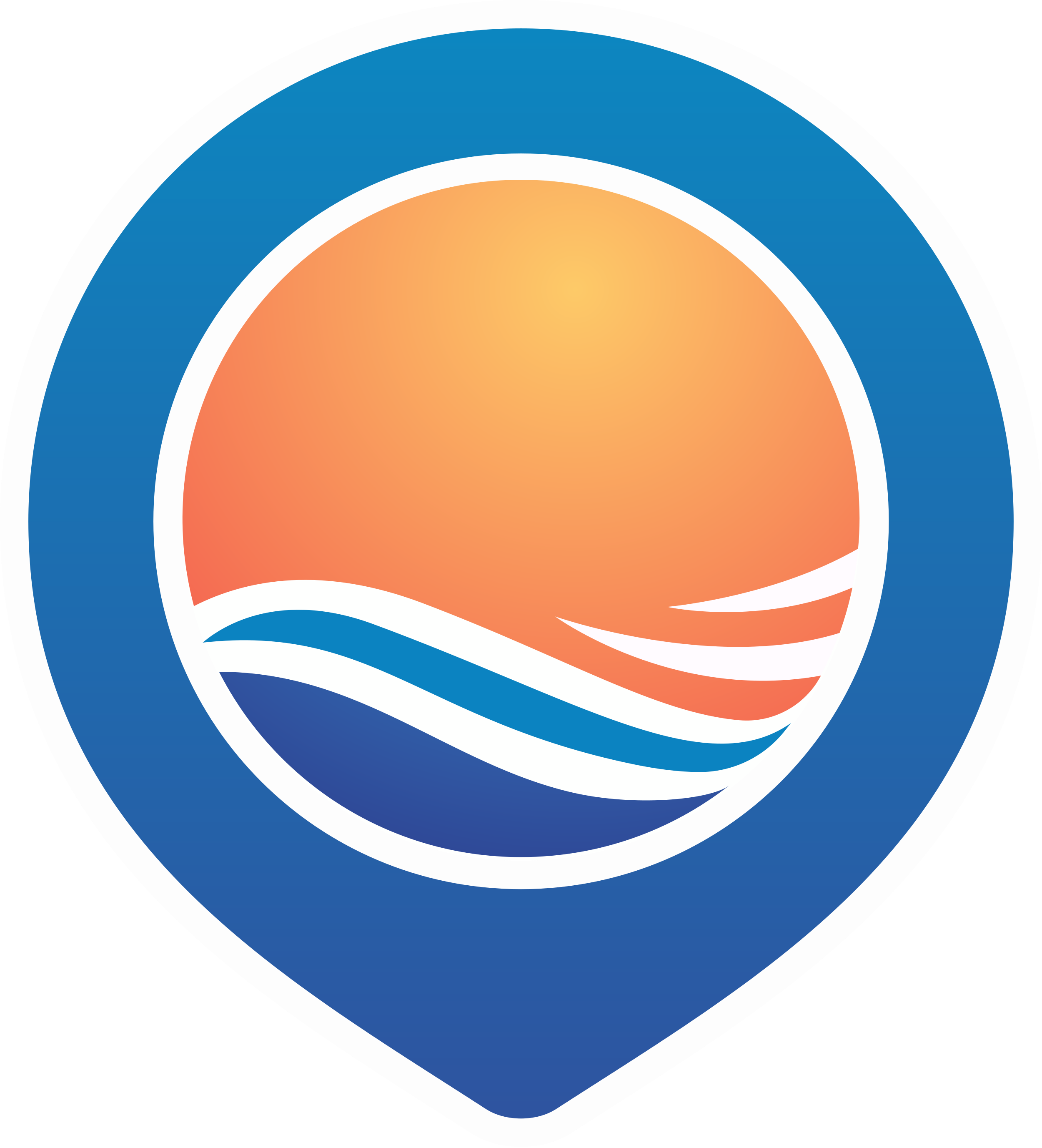
With the COSEA App, Citizen Scientists can observe marine environments, document coastal habitats or species, and report on pollution, infrastructure and the blue economy. Their contributions on the map and activity in the app will help scientists better understand the impacts and drivers of marine factors to protect and foster a healthy relationship between humans and seas.
COSEA | Collaboration for Effective Sea Action

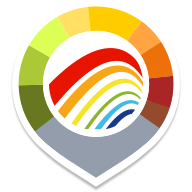
Naturkalender is the Austrian phenology App for interested Citizen Scientists who want to contribute to phenology and climate research by keeping a watch on their surroundings. Through Community Science observations like plants beginning to blossom, having fruits, starting to throw off leaves or when animals are active, they support the Austrian Central Institution for Meteorology and Geodynamics´ data collection.
Nature's Calendar ZAMG


At the Spot-a-Bee Citizen Science project, the researchers of Cardiff University and the University of Glasgow, UK want to find out what plants, trees and shrubs are important for bees in city and town parks and gardens. The project also wants to understand how planting in urban places might affect the production of urban honey. People can help survey bee-friendly plants in towns, cities and villages.
Spot-a-Bee


CoastSnap is a global Citizen Science project to capture changing coastlines. With the Citizen Science App, users can create timelines of coasts and record their development. Observing and uploading photos of the same location into the CoastSnap App helps researchers to understand how coastlines are changing over time.
CoastSnap


The Citizen Science App "CoronaReport" allows social science to understand the current Corona Virus crisis better and collect data about the impact of COVID-19 on our lives and society. The app can be used by Citizen Scientists to create diaries and reports about situations, with which the Citizen Science community can interact and exchange their thoughts and stories. The contributions will help social science and the data will be made available to research partners. CoronaReport is lead by the University of Edinburgh, Scotland, UK.
CoronaReport


In the SpiderSpotter App, Citizen Scientists can share observations of spiders and their webs to help the research about their adaptation to the environment and contribute to biodiversity monitoring. The App features a range of spider species and it has an active community of spider enthusiasts and arachnologists.
SpiderSpotter

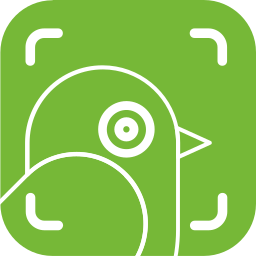
Global 2000's "LitterBug" Project is an initiative of the independent Austrian environmental organization GLOBAL 2000 alongside the Austrian Alpine Association "Edelweiss" and Alpine Club Mountain Club. The initiative was created to free nature from trash and to sharpen our awareness for the trash surrounding us in nature. The aim is to support a sustainably clean environment everywhere.
Global2000 LitterBug


Pilzfinder is the Web App of the mycology research society of the University of Vienna. In the browser-based project, participants can contribute mushroom observations from all across Europe and get feedback from the expert of the Austrian Mycology Society. By joining this Citizen Science project, users help with the science behind fungi and learn more about the fascinating world of mushrooms.
Pilzfinder


Coastal areas are in constant evolution, but in times of the imminent climate crisis, the coastline will change dramatically, and extreme weather phenomena are already starting to be part of our daily life. The Coastal Observer Citizen Science project explores these effects and their impact on the environment and our mood. By contributing observations about floods, tides storms and water quality, Citizen Scientists can help the University of Delaware, US, with their research.
Coastal Observer


ArtSpots

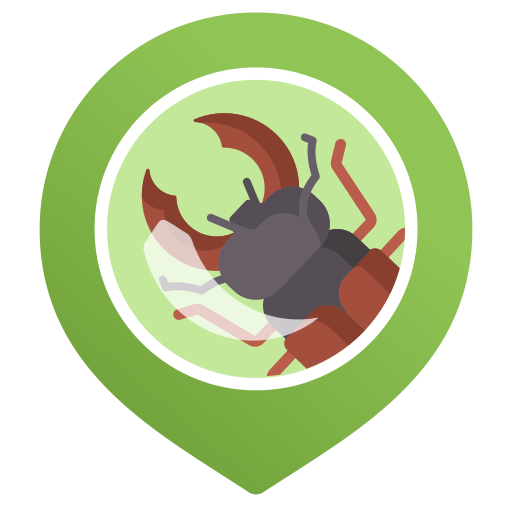
The BOB (acronym for Behavioural Observations in Beetles) App, an initiative by CREA, is dedicated to contributing to the behavioral study of protected insects in Europe. Citizen scientists are invited to observe three particular types of beetles in their surroundings: the stag beetle (Lucanus cervus), the rosalia longicorn (Rosalia alpina) and the funereal longhorn beetle (Morimus asper).
BOB - Behavioural Observations in Beetles

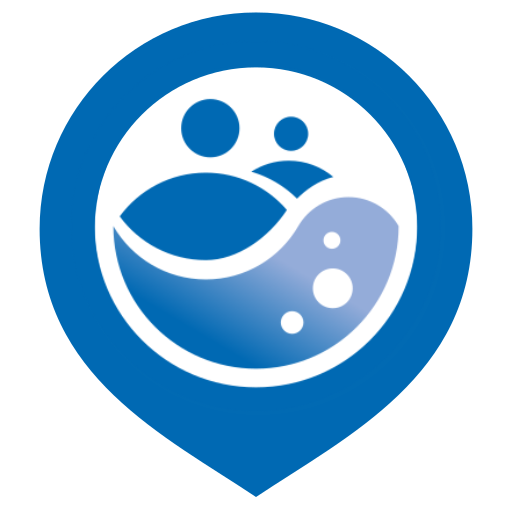
HydroCrowd is a research project of the Justus Liebig University Giessen, which investigates the potential of participatory monitoring to increase the availability of hydro-climatic data for sustainable water management in Ecuador, Honduras and Tanzania.
HydroCrowd

Bicizen is a Citzien Science project where participants may provide observations about cycling, public engagement, and urban mobility through a citizen science platform that aids cities in their transition to a low-carbon mobility future and empowers urban cyclists with helpful trip information.
BiciZen

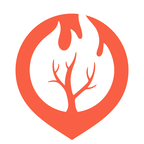
spotFIRE is a Citizen Science project focusing on forest fire and fuel management to reduce forest fire risk, initiated by BOKU University (University of Natural Resources and Life Sciences, Vienna). The project aims to evaluate the suitability of a mobile phone application inspired by citizen science approaches to measure forest fuel data and collect information on forest fire events for fire risk management in mountainous regions.
spotFIRE

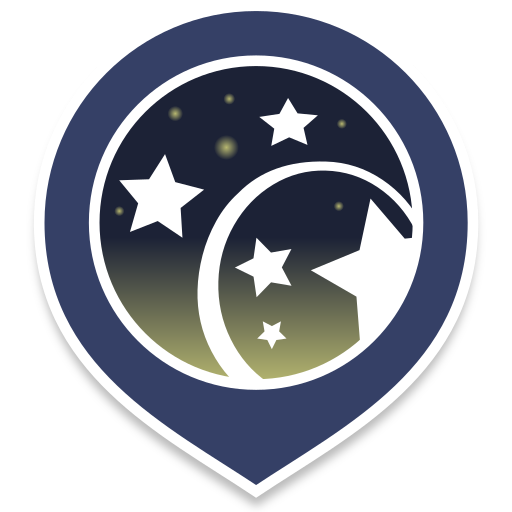
The "Stjärnförsöket" (Star-Spotting) project collects contributions about light pollution in Sweden and in partner countries. By pointing a cardboard tube in all cardinal directions, Citizen Scientists record how many stars they see at their current location. By these values, light pollution can be calculated directly in the Citizen Science app. The project is part of the "Forskar Fredag 2019" initiative, funded by the EU Horizon 2020 program.
Stjärnförsöket


In the Tea Bag Index Citizen Science App, everything is about soil. Various observation categories are ready to participate in, from easy soil classification and testing to the well-known method of burying and weighting teabags to measure the decay rate of plants. Citizen Scientists are welcome to participate worldwide and contribute to improving climate models and soil research.
Tea Bag Index

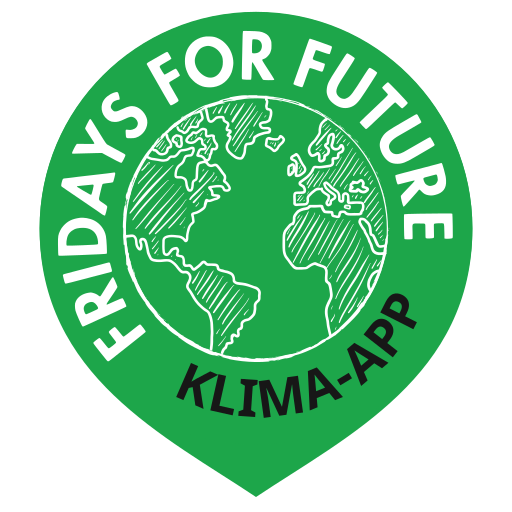
Fridays for Future see itself as a horizontal, grassroots grassroots movement that acts apolitically and refers to science for the facts. To engage the global population more, this app was developed using SPOTTERON. The aim is to find out how the population perceives the climate crisis and which positive and negative emotions are associated with specific topics related to biodiversity and climate crisis.
FRIDAYS FOR FUTURE - Climate App

Horizon Europe / Horizon 2020 Projects

The IPM-Popillia Horizon 2020 project aims to address the challenge of a new risk to plant health in Europe's agriculture and food safety: the invasion of the Japanese Beetle, Popillia japonica. This invasive species was introduced accidentally to mainland Europe in 2014 and can quickly spread by transportation and trade. As a species with a wide range of feeding plants, P. japonica threatens the entire agricultural sector, urban landscapes, and biodiversity in invaded areas.
IPM Popillia | Integrated Pest Management of the Japanese Beetle


EFFECTIVE, a Horizon Europe initiative, targets the emerging threat to the EU's Mediterranean Blue Natural Capital. By leveraging advanced science, technological nature-based solutions, digitalization, and social implication, the project aims to develop a comprehensive scientific knowledge base and practical guidance for the application of Ecosystem-Based Management to promote large-scale marine protected areas establishment in the European seas.
EFFECTIVE | Protection and Restoration Management of Mediterranean Marine Protected Areas


TRANSEATION, funded by Horizon Europe, aims to validate a new level of ecosystem-based management by integrating social implication digitalization and nature-based solutions to safeguard and restore marine ecosystem health and services. The project focuses on demonstrating the effectiveness of marine and coastal hybrid blue-grey infrastructures and developing digital tools for monitoring, analysis, and social involvement, addressing societal challenges and promoting sustainable management practices.
TRANSEATION | Advancements through Hybrid Blue-Grey Infrastructures in Marine and Coastal Areas


In Europe and globally, substantial numbers of young people are at risk of social exclusion. Therefore, there is a pressing need to develop more knowledge and innovation to create inclusive and youth-friendly societies. The Horizon 2020 R&I Project YouCount contributes to these needs by developing 'actionable' knowledge for social inclusion of disadvantaged youths in the European Union and creating better means for social inclusion through citizen social science.
YouCount | Youth Citizen Science

MINAGRIS | Micro and Nanoplastics in Agricultural Soils

StreetMind contributes to a better understanding how environmental factors like urbanicity or climate change influence how individuals across Europe and the world feel, act, and behave. Participants make up their minds with fellow citizens and scientists and share their daily experiences of their surroundings and the environment where they live, work, and interact.
StreetMind

National / Regional Citizen Science Apps

MTA - MountainApp wants to inspire people to immerse themselves in landscapes. MTA - MountainApp is a project jointly run by researchers from Switzerland and Georgia. MTA - MountainApp was developed for a transnational research seminar taught at the University of Zurich and the Ivane Javakhishvili Tbilisi State University.
MTA MountainApp


The ClimateWatch program is the collaborative brainchild of Earthwatch Australia, the Bureau of Meteorology and the University of Melbourne to understand how changes in temperature and rainfall are affecting the seasonal behaviour of Australia's plants and animals. The ClimateWatch Citizen Science App enables every Australian to be involved in collecting and recording data that will help shape the country’s scientific response to climate change.
ClimateWatch


Our Outdoors is a citizen science project which aims to find out more about what users experience when they are in public spaces such as parks, beaches, canals, and town squares. It was developed by researchers in the Scottish Collaboration of Public Health Research and Practice (SCPHRP) at the University of Edinburgh in partnership with Sustrans, the MRC and citizens.
Our Outdoors


The Big City Birds Citizen Science App aims to learn about five specific bird species and their behavioral adaptations to living in the city. Their whereabouts, behaviors, communal roosts, and nest sites are of interest to researchers at the Max Planck Institute of Animal Behavior, the National Australian University, and The University of Sydney. The data collected will help scientists understand these species’ behavior, movement, reproduction, distribution, and habitat use in suburban areas.
Big City Birds

Slip of Evidence


"Crows in the zoo" is a Citizen Science project of the Department for Behavioral and Cognitive Biology of the University of Vienna in cooperation with the Konrad Lorenz Research Station and the Zoo Vienna. The researchers aim to find out more about the species and subspecies of crows that use the Zoo area. All visitors of the Zoo Vienna are welcome to join in!
KraMobil


The MAKENYA | Mammal Atlas Kenya is the first Citizen Science App for an African country running on the SPOTTERON Platform. The Citizen Science Project from the Zoology Department of Kenya's National Museums, enables naturalists to report sightings of mammals during their expeditions. Such data is unavailable, but is valuable for conservation and mapping the distribution of Kenyan mammals.
MAKENYA

The Green Growth Wildlife App intends to address Suriname's existing lack of a centralized system for biodiversity information. With the App, users can efficiently map and analyze the status of Suriname's unique wildlife by gathering data through it.
Green Growth Wildlife


With the Green Growth app everyone can contribute to keeping Suriname the greenest country on earth with 93% forest cover. The data will help to manage the forests of South America. This Citizen Science project aims to create an active community of forest watchers and keep Suriname green.
Green Growth Forests


This project gives interested Citizen Scientists, who range from school pupils to amateur collectors and professional scientists, a basis for identifying new fossil findings, publishing these and thereby completing the network of data from the Earth history in Austria.
Fossilfinder


"EBW" stands for "Ergebnisorientierte Bewirtschaftung" ("result-oriented management") and is a highly specialized app for farmers and agriculturists to increase biodiversity in Austrian agricultural and natural landscapes.
EBW - Result-oriented management

In the Roadkill Citizen Science Project from the University of Natural Ressources and Life Sciences in Vienna, Citizen Scientists and researchers collect data about roadkill on streets all around the world. If there`s a high number of roadkill in one spot or a particular species gets killed in the same place a lot, that can help scientists understand how the animals came to die and find solutions for it.
Roadkill

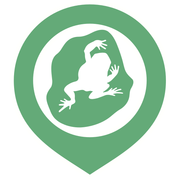
The AmphiBiom project aims to take an important step towards a comprehensive protection concept for the green toad. This involves an Austria-wide inventory and analysis of the habitat preferences of the critically endangered green toad, a typical pioneer species that can quickly colonize newly emerging waters.
AmphiApp


PATIO stands for "Patient Involvement in Oncology" and is a project of the Ludwig Boltzmann Institute Applied Diagnostics, which deals with citizen involvement after the diagnosis of prostate cancer. In the PatioSpots app, users can enter, find & rate WC facilities, as well as treatment, counseling and important contact points in their surrounding area.
PatioSpots

QuakeWatch Austria - an initiative of ZAMG (Central Institute for Meteorology and Geodynamics) - involves broad sections of the population in earthquake research. The objective is to record earthquake perceptions and effects in Austria more quickly and precisely. The collected data of the Citizen Scientists support a better assessment of the hazard of future earthquakes.
QuakeWatch Austria

Soils for Science is a Citizen Science initiative of The University of Queensland, Institute for Molecular Bioscience. Soils for Science aims to inform the public on the importance of antibiotic resistance in modern healthcare, and soil microbes as a source of next-generation antibiotics. Soils for Science provides the public with free sampling kits to collect soil samples rich in microbial biodiversity (bacteria and fungi).
Soils for Science

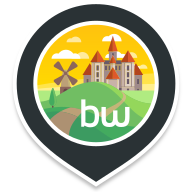
Landauf, LandApp BW is an interactive data collection project by LEO BW and the National Archive of Baden-Würtemberg in Germany, EU. The Citizen Science App is focused on contributions about landmarks and historical buildings in the area. The project is including local communities and gather their knowledge about their own regions.
Landauf, LandApp BW


Nature Park Garden is a project of the Federation for the Environment and Nature Conservation Germany (Bund für Umwelt und Naturschutz Deutschland e.V. (BUND)).
Gardening is experiencing a renaissance. By avoiding pesticides and peat and using natural cycles in cultivation, biodiversity is promoted. Gardens offer enormous potential for the protection of biodiversity, and this Citizen Science project is here to help.
Nature Park Garden | BUND


Cane toads are relentless invaders. Native to Central America, cane toads were transported to sugar cane growing regions of the world early last century, including Australia, in the hope they would eat and eradicate beetles devastating sugar cane crops. The experiment failed spectacularly. Toads ignored beetles, and instead embarked on an epic global invasion.
Cane Toad Challenge


Nature's Calender Burgenland is the next regional project of the Nature's Calender app family. The Citizen Science app can be used locally for phenology observations in nature and offers all community functions and features for species classfication. By the local character of the Citizen Science app especially schools and educational institutions in the region can participate in an optimal way.
Nature's Calender Burgenland

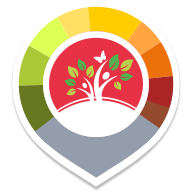
Nature's Calendar Upper Austria is a regional Nature's Calendar project, which also collects data for the Central Institution for Meteorology and Geodynamics (ZAMG). The data collected can be observed in nature and compared over years, so it's observations like plants starting to blossom, trees yielding fruit or throwing off leaves or animals being active that support scientific research in this project.
Nature's Calendar Upper Austria


In collaboration with the Institue for Transport at the University of Life Sciences, Vienna, this Citizen Science App was specially made for kids and teenagers. The Community Science project aspires to understand better how they perceive and rate possible dangers and their surroundings in general.
Was Geht Ab?


"Forschen im Almtal" is the app for a Citizen Science project of the University of Vienna in collaboration with the wildlife park in Grünau in Austria's Almtal. Visitors of the Wildlife park can become Citizen Scientists and observe three bird species (grey goose, raven and northern bald ibis) and help collect data on their behaviour in the Citizen Science App 'Forschen im Almtal'.
Forschen im Almtal


WaldrApp is a Citizen Science project from the University of Vienna aiming to collect ecological information on the whereabouts of "Waldrapps" (English: northern bald ibis). Since these birds are an endangered species, the data collected through the app can help gain essential data for future settling projects.
WaldrApp

Using the WATERLINX APP will open up new insights into intricate interactions between different species of animals and plants and their environment by exploring the relations between water quality, species compositions in ecosystems, and human actions.
WaterLinx | Citizen Science

PartiCollect is a project by NanoObs and PartiCiTaE that invites Citizen Scientists to take part in mapping fine-particle air pollution in the city by collecting tree bark samples, which are then analyzed for metallic pollutants that are largely linked to car traffic and are known to negatively impact human and plant health.
PartiCollect | Citizen Science

P51 is a project by La Ruta del Clima with the objective to gather knowledge from communities about the effects of climate change on different issues such as infrastructure, territorial changes, human rights, loss of species and territority etc.
P51 | Citizen Science

Finished Citizen Science Projects
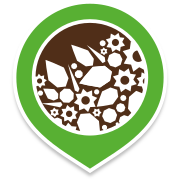
Fjällkalendern
While visiting Abisko, it's possible to participate in the research project concerning climate change effects in the Arctic and in the Swedish mountains. Interested Citizen Scientists can enter their observations of the mountain slope Nuolja/Njullà in" fenologislinga" ("science path") and thereby contribute to this citizen observatory.
Anslagstavlan
The Citizen Science project Anslagstavlan ("Public boards") collects images from bulletin boards around the world. By taking pictures of messages and describing them, you contribute to the scientific research on communication of a collaborated Community Science project among the University of Gothenburg, the University of Stockholm and the European Researchers' Night. Also, you are sharing a piece of culture with peers around the world.
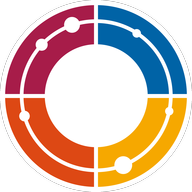
PoliticsRadar
In the Citizen Science Web-App of "PolitikRadar" pupils from various schools were able to share their views of participatory possibilities in various field of politics. A forum for communication between the research team and the participant was available for further exchange. The results are available at the website of the project here: https://www.politikradar.at/ (german only)
WEVO | Vienna Elections
For the Viennese Elections 2015, the project WEVO was running as a participatory tool with the integration of citizen feedback to politics. Citizens were able to post observations about the daily life in the city of Vienna, categorize and rate their sightings and automatically submit these observations to the various parties available for election.
Surveillance
This community project aims to show the surveillance apparatus we are constantly being watched by. With their entries, the users can collect data on surveillance technology in their surroundings and also raise awareness of the denseness of surveillance surrounding citizens in their day to day lives.

GEFABE
The Top Citizen Science project „Gemeinsam fahren wir besser“ (approx: We drive better together) of the Center for Human-Computer Interaction at the University of Salzburg aims to collect data on driver assistance systems in collaboration with Austrian drivers via the Community Science App GeFaBe. The goal is to highlight shortcomings and security holes but also good practice in driver assistance systems.
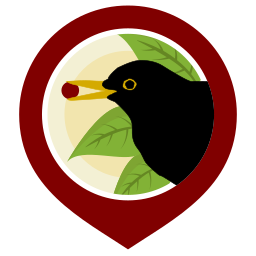
Fågelbär
With this Citizen Science app, it's possible to contribute to the Community Science project "Fägelbär "(English: Birdberry) by reporting observations of birds eating berries. Researchers from the Department of Ecology, Environmental and Botany at the University of Stockholm collect the data to better understand which birds feed on which berries, how they are involved in spreading plants, and to gain knowledge about landscaping and consequences of a warmer climate.
Nature's Calendar Styria (Austria)
Nature's Calendar Styria is another regional Nature's Calendar project which also aims to observe nature with the help of attentive Citizen Scientists. They support environment- and climate research with observations of when plants begin to blossom, trees produce fruit or start throwing off leaves or when animals are active. The collected data also goes into the data collection of the Austrian ZAMG (Central Institution for Meteorology and Geodynamics).
BrushTurkeys
BRUSHTURKEYS is a citizen science project aiming to gather sightings of, and behavioural information on, the Australian Brush-turkey, a native species spreading into suburban areas of Australia. This project is coordinated by The University of Sydney, in collaboration with the Royal Botanic Garden Sydney and Taronga Conservation Society.

Nature's Calendar Lower Austria
Nature seems to be on a rollercoaster ride these days. Sometimes there's spring in the middle of winter, then there are cold spells over and over again when it's almost summer. This is why nature- and climate researchers need more and more information about when plants begin to blossom, have fruits or start throwing off their leaves or when animals are active. Entries in the ‚Nature's Calendar' App support the Austrian ZAMG's data collection.

The connections between water and geological underground are diverse and often complex. Using the SIBRA App, citizens can generate reliable data on these topics and thus contribute to a better understanding of these connections. At the Geological Survey of Austria, the data is being combined with other methods of measurement and used, inter alia, in developing models and scenarios that allow for assessing possible effects of extreme weather events, such as heavy precipitation, rapid snowmelt, flooding or draught.




